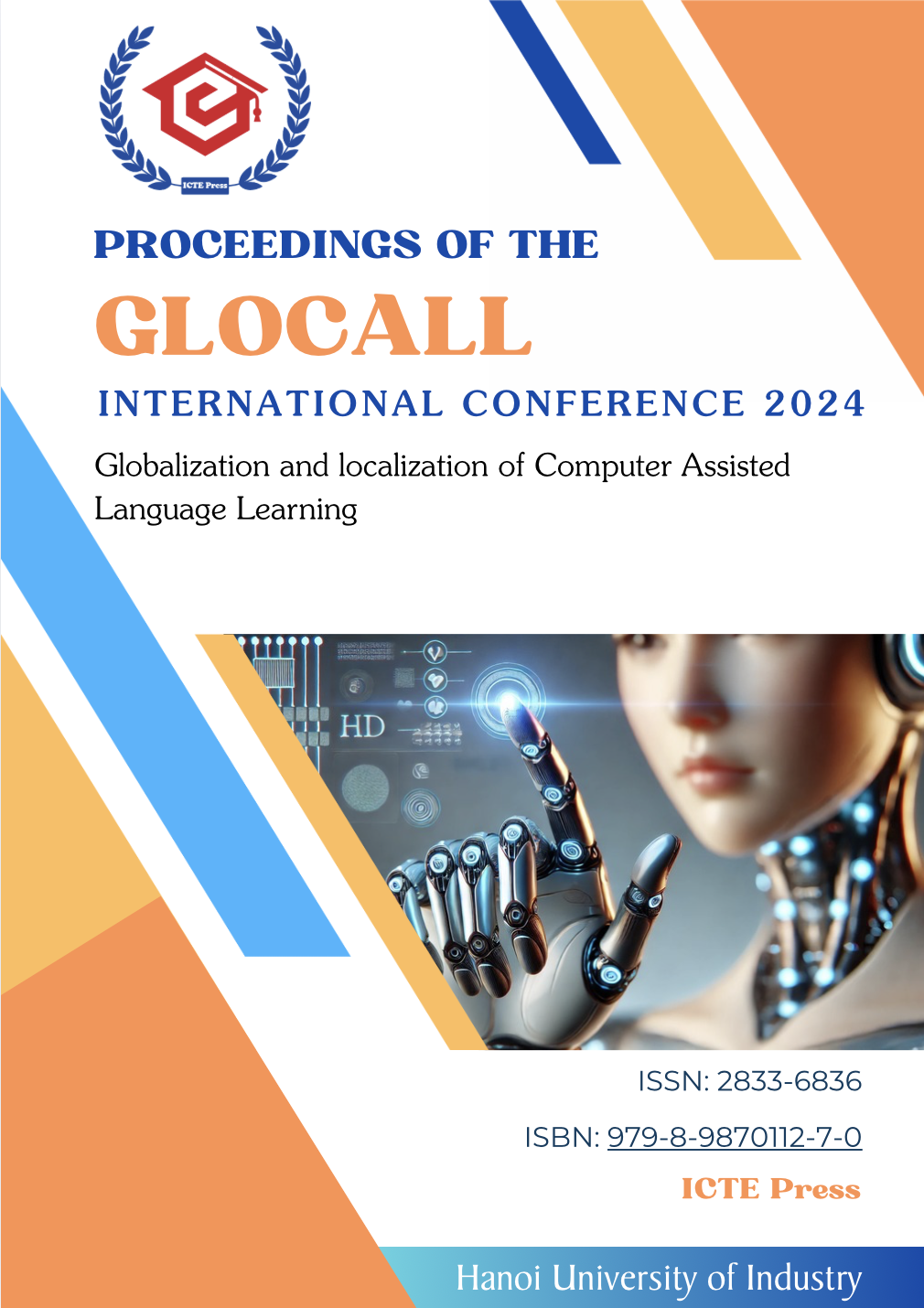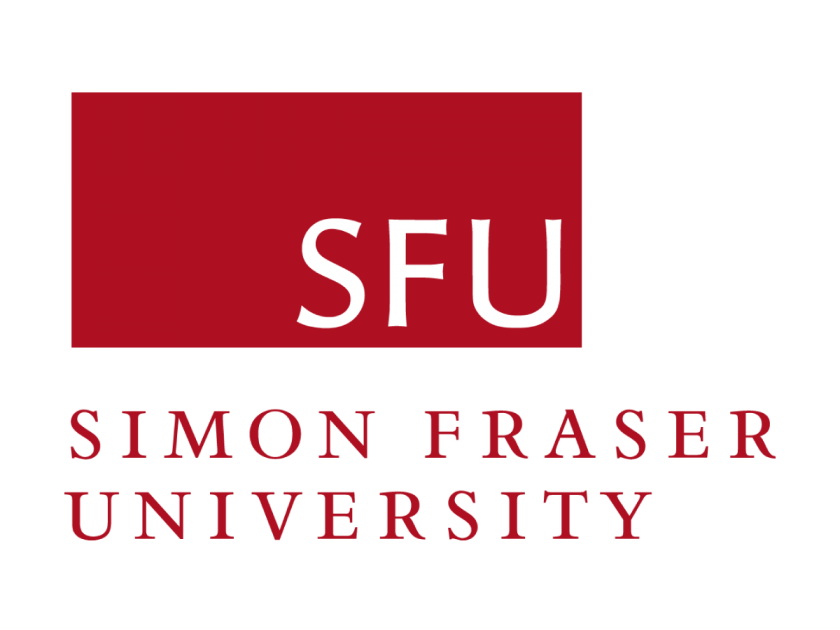The Impacts of Video Dubbing on Non-English Major Students’ Speaking Skills
DOI:
https://doi.org/10.54855/paic.2573Keywords:
video dubbing, speaking skills, learning attitude, experimentalAbstract
This study examines the impacts of video dubbing on the speaking skills of first-year non-English major students at Hanoi University of Industry and evaluates their attitude towards this instructional approach. Participants were split into experimental and control groups. The experimental group participated in a 10-week learning intervention that included video dubbing, whereas the control group did not. Data collection methods included a pre-test, post-test, and teacher observation checklist, primarily for the experimental group, employing both quantitative and qualitative analyses. The findings indicate a noticeable improvement in participants' speaking skills among those exposed to video dubbing activities compared to those who were not. Additionally, experimental participants showed eagerness and heightened enthusiasm for learning during lessons that included video dubbing. The study suggests that video dubbing is a valuable teaching tool for language instructors and recommends further exploration of similar interventions in diverse regions and among different student cohorts, as well as focusing on other language skills, such as listening, reading, and writing.
References
Brown, H. D. (2021). Teaching by principles: An interactive approach to language pedagogy (5th ed.). Pearson Education.
Brown, H. Douglas. (2004). Language Assessment: Principles and Classroom Practices. New York: Pearson Education.
Brown, H.D. (2001). Teaching by Principles: An Interactive Approach to Language Pedagogy. New York: Addison Wesley Longmn Inc.
Burston, J. (2005). Video dubbing projects in the foreign language curriculum. Calico Journal, 23(1), 79-92. https://doi.org/10.1558/cj.v23i1.79-92 DOI: https://doi.org/10.1558/cj.v23i1.79-92
Chaney, A. L., & Burk, T. L. (1998). Teaching Oral Communication in Grades K-8. Boston: Allyn and Bacon.
Chiu, Y. H. (2012). Can film dubbing projects facilitate EFL learners' acquisition of English pronunciation? British Journal of Educational Technology, 43(1), 13-26. http://dx.doi.org/10.1111/j.1467-8535.2011.01252.x DOI: https://doi.org/10.1111/j.1467-8535.2011.01252.x
Florente, I. L. (2016). How movie dubbing can help native Chinese. Hamline University
He, P., & Wasuntarasophit, S. (2015). The effects of video dubbing tasks on reinforcing oral proficiency for Chinese vocational college students. Asian EFL Journal, 17(2), 106-133.
Hwang, G. J., Fathi, J., & Rahimi, M. (2025). Fostering EFL Learners' Speaking Skills and Flow Experience with Video‐Dubbing Tasks: A Flow Theory Perspective. Journal of Computer Assisted Learning, 41(2), e13120. https://doi.org/10.1111/jcal.13120 DOI: https://doi.org/10.1111/jcal.13120
Jao, C. Y., Yeh, H. C., Huang, W. R., & Chen, N. S. (2024). Using video dubbing to foster college students’ English-speaking ability. Computer Assisted Language Learning, 37(4), 585-607. https://doi.org/10.1080/09588221.2022.2049824 DOI: https://doi.org/10.1080/09588221.2022.2049824
Larsen-Freeman, D., & Celce-Murcia, M. (2020). The grammar book: An ESL/EFL teacher's course (3rd ed.). National Geographic Learning.
Laufer, B., & Goldstein, Z. (2020). Vocabulary in language teaching and learning. Routledge.
Nhan, L. K. (2024). Factors Affecting English Speaking Proficiency among English-majored Students in a Vietnamese University. International Journal of Science and Management Studies (IJSMS), v7 (i3), 237-245. https://doi.org/10.51386/25815946/ijsms-v7i3p112 DOI: https://doi.org/10.51386/25815946/ijsms-v7i3p112
Luoma, S. (2020). Assessing speaking. Cambridge University Press.
Mei, L.L., & Masoumeh, A. (2017). An Analysis of Factors Influencing Learners’ English speaking Skill. International Journal of Research, 2(1), 34-41. https://doi.org/10.18869/acadpub.ijree.2.1.34 DOI: https://doi.org/10.18869/acadpub.ijree.2.1.34
Nation, I. S. P. (2020). Fluency in second language learning. Cambridge University Press.
Nation, I. S. P., & Yamamoto, A. (2021). Teaching ESL/EFL listening and speaking (2nd ed.). Routledge.
Nguyen, T. Q., & Nguyen, K. D. (2025). The Effects of Video Dubbing on EFL Learners' Pronunciation and their Attitudes toward the Technique. TESL-EJ, 29(1). https://doi.org/10.55593/ej.29113a4 DOI: https://doi.org/10.55593/ej.29113a4
Oanh, B. T. N. (2021). Sử dụng lồng tiếng phim trong giảng dạy phát âm cho sinh viên chuyên ngữ. TNU Journal of Science and Technology, 226(12), 22-27. https://doi.org/10.34238/tnu-jst.4621 DOI: https://doi.org/10.34238/tnu-jst.4621
Pamungkas, F. D. (2019a). Improving Students’ Pronunciation Using Video Dubbing (A Classroom Action Research for Tenth Grade and Eleventh Grade Students of Vocational High School). Academic Journal Perspective: Education, Language, and Literature, 7(1), 11-17. https://doi.org/10.33603/perspective.v7i1.1794 DOI: https://doi.org/10.33603/perspective.v7i1.1794
Pamungkas, F. D. (2019b). How video dubbing can improve students’ speaking pronunciation. ETERNAL (English, Teaching, Learning, and Research Journal), 5(1), 41-53. https://doi.org/10.24252/Eternal.V51.2019.A4 DOI: https://doi.org/10.24252/Eternal.V51.2019.A4
Park, P. (2022). A Case Study of an English Dubbing Class Utilizing Movies. Journal of English Teaching through Movies and Media, 23(3), 1-15. https://doi.org/10.16875/stem.2022.23.3.1 DOI: https://doi.org/10.16875/stem.2022.23.3.1
Richard, Jack.2008. Teaching Listening and Speaking. New York: Cambridge University Press.
Richards, J. C., & Renandya, W. A. (2020). Methodology in language teaching: An anthology of current practice. Cambridge University Press.
Shalihah, M. S. M. (2020). Improving students' speaking skill by using action learning strategy in English lessons at the eighth grade of MTs Muhammadiyah Limbung. Universitas Muhammadiyah. https://doi.org/10.33369/jwacana.v19i1.23033 DOI: https://doi.org/10.33369/jwacana.v19i1.23033
Thornbury, S. (2022). How to teach speaking (2nd ed.). Pearson Education.
Tran, L. A., Tran, T. D., Nguyen, M. H., & Nguyen, M. N. (2023). Language-majored students’ perception of Blended Learning at a university in Vietnam. Proceedings of the AsiaCALL InternationalConference,1,104-114.ISSN: 2833-6836; ISBN: 979-8-9870112-1-8. https://doi.org/10.54855/paic.2217 DOI: https://doi.org/10.54855/paic.2217
Truong, N. K. V., & Le, Q. T. (2022). Utilizing YouTube to Enhance English Speaking Skill: EFL Tertiary Students’ Practices and Perceptions. AsiaCALL Online Journal, 13(4), 7-31. https://doi.org/10.54855/acoj.221342 DOI: https://doi.org/10.54855/acoj.221342
Wati, I. M., & Rozimela, Y. (2019). The use of dubbing video technique for improving students’ speaking skill and confidence of senior high school students. Journal of English Language Teaching, 8(1), 259-269.
Yen, T. T. H. (2021). Using Movie Dubbing to Improve Natural English Pronunciation Skills. In English teaching forum (Vol. 59, No. 1, pp. 20-25). US Department of State. Bureau of Educational and Cultural Affairs, Office of English Language Programs, SA-5, 2200 C Street NW 4th Floor, Washington, DC 20037.
Downloads
Published
How to Cite
Issue
Section
License
Copyright (c) 2025 Pham Hai Yen, Tran Thi Thuy Trang

This work is licensed under a Creative Commons Attribution 4.0 International License.
Copyright
The copyright of all articles published in the Proceedings of the AsiaCALL International Conference (paic) remains with the Authors, i.e. Authors retain full ownership of their article. Permitted third-party reuse of the open access articles is defined by the applicable Creative Commons (CC) end-user license which is accepted by the Authors upon submission of their paper. All articles in the aicp are published under the CC BY-NC 4.0 license, meaning that end users can freely share an article (i.e. copy and redistribute the material in any medium or format) and adapt it (i.e. remix, transform and build upon the material) on the condition that proper attribution is given (i.e. appropriate credit, a link to the applicable license and an indication if any changes were made; all in such a way that does not suggest that the licensor endorses the user or the use) and the material is only used for non-commercial purposes.









